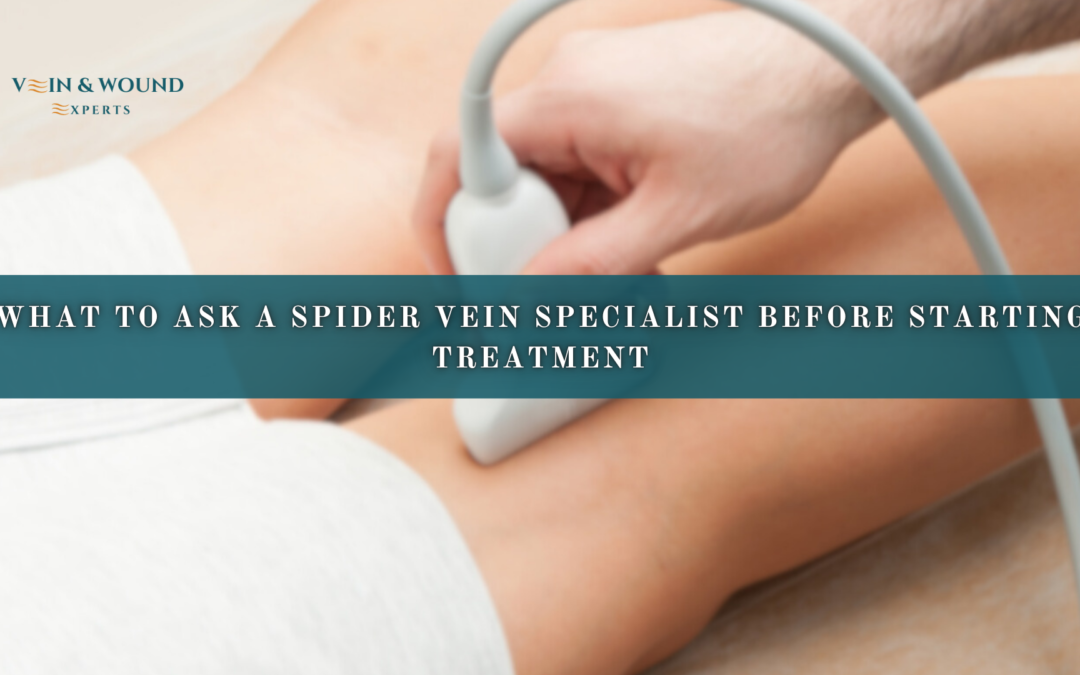🩺 Questions for a Spider Vein Specialist
Spider veins are more than a cosmetic concern—they can sometimes cause discomfort, aching, or swelling in the legs. Before committing to any procedure, it is crucial to understand the treatment process, expected outcomes, and potential risks. Visiting a spider vein specialist ensures that your care is personalized, safe, and effective.
🧬 Your Treatment Options
When you first meet a spider vein specialist, one of the most important topics is treatment options. Spider veins can be treated through sclerotherapy, laser therapy, or a combination of both.
Q: Which treatment is best for my spider veins and why?
A: Your specialist will evaluate the size, location, and severity of your veins. Small, superficial veins often respond well to laser treatment, while larger or clustered veins may require sclerotherapy. Some patients benefit from a combination approach to maximize results.
Q: How many sessions will I need for optimal results?
A: Typically, 2–4 sessions are needed, spaced a few weeks apart. The exact number depends on the number and size of veins being treated. Your specialist can provide a customized plan during consultation.
Understanding this allows patients to plan realistically and avoid unnecessary procedures.
⏳ Recovery and Follow-Up Questions
A key concern for patients is the recovery process.
Q: How long will I need to rest or limit physical activity?
A: Most patients resume normal activities immediately or within 24 hours. Light walking is encouraged to improve circulation, while strenuous exercise may need to be postponed for a few days.
Q: Are compression stockings necessary post-treatment?
A: In many cases, wearing compression stockings for 1–2 weeks helps reduce swelling, improves healing, and supports treated veins. Your spider vein specialist will give personalized instructions.
Q: When can I expect to see results?
A: Initial improvement is often visible within 2–3 weeks, with full results typically appearing after 6–12 weeks. Some veins may fade gradually over several months.
⚠️ Risks and Expectations
Even minimally invasive procedures carry potential risks.
Q: What are the short-term and long-term risks of this procedure?
A: Minor bruising, temporary redness, or slight swelling is common. Rarely, pigmentation changes or small skin ulcers may occur. Long-term risks are low, and the majority of patients experience safe, lasting results.
Q: Can treatment prevent future spider veins or varicose veins?
A: While treatment eliminates existing veins, it cannot guarantee prevention of new veins. Maintaining a healthy lifestyle, managing weight, and regular follow-ups with a spider vein specialist can reduce recurrence.
💡 Preparation and Aftercare
Q: What should I avoid before and after the procedure to ensure proper healing?
A: Avoid blood-thinning medications (if approved by your physician), prolonged sun exposure, and heavy exercise immediately after treatment. Following your specialist’s aftercare instructions—including wearing compression stockings and keeping the treated area clean—supports optimal results.
🌟 Why Early Consultation Matters
Addressing spider veins early can prevent more serious venous issues in the future. Consulting a spider vein specialist promptly ensures treatment is simpler, recovery is faster, and long-term outcomes are improved. Early intervention also reduces the likelihood of complications and can save both time and money in the long run.
Visiting a spider vein specialist at Vein & Wound Experts in Downey provides personalized care for spider veins, varicose veins, and other vascular concerns. By preparing specific questions and understanding your options, you can take control of your vein health confidently and safely.

Andy Sharifi
Position
